|
Roundtable Discussion Identifying New Technologies
In Albany, May 18, 2004, Commission Chairwoman Joan L. Millman hosted the first roundtable session with
Assemblyman Steve Englebright, Chair of the Assembly Committee on Aging, to learn what our universities
and researchers are working on that would help the elderly and their caretakers maintain and increase their
quality of life.
The Commission learned about promising new technologies as well as some behavioral issues that may
affect how public policy for the elderly develops.
Among the innovative ideas discussed was an experimental “smart house,” that contains
microchips implanted in the floor to ascertain a person’s gait. The Commission heard testimony
from Cecelia Horowitz of the University of Rochester’s Center for Future Health, who explained that not only
do the instruments indicate if one has fallen, but they also reveal a change in gait, a warning sign of illness even
before a person has other physical symptoms. In addition, she demonstrated a talking computer that reminded the
resident to take his or her medication, allowed the resident to ask the computer questions and get replies (for
example, if the senior has a headache, would taking aspirin interfere with his or her current medication), and generally
monitor how the resident is doing on a daily basis. One advantage of this system is that, instead of a doctor seeing a
snapshot of a senior’s health profile – for example, the patient’s blood pressure only on the day
of the medical appointment – the doctor would get a readout of the patient’s blood pressure over the
course of a month or two. In the future, Ms. Horowitz predicted, the home will interface with the health care system to
provide better information to doctors and better service to seniors.
New York State will see a 50% increase in older drivers by 2015. More will be female, and more will be dependent
upon their personal automobile, according to Dr. Nina Glasgow, Senior Research Associate at Cornell
University’s Department of Rural Sociology. Trends show older persons driving greater distances for the
necessities of life because many local retailers and services have moved to malls and commercial zones. In rural
areas, lack of public transportation means that older people must remain dependent upon private transportation
even as they incur aging-related frailties. The projected increases in the number of older drivers, the amount of driving,
and added crash injury risk from age frailty mean New York State will see a predictably normal increase in the number
of older driver crashes and fatalities.
The elderly compensate for tasks that they are no longer able to perform as they had when they were younger,
noted Dr. Steven Albert, Associate Professor of Clinical Sociomedical Science, at the Sergievsky Center of Columbia
University. For example, many elderly know that their reaction times are now slower than in the past. As a result, many
elderly do not drive during rush hour times when the traffic is heavier and more impatient. In addition to compensation,
the perspective of the elderly as to how incapacitated they are very often depends on their sociological culture. An elderly
person with little access to health care might be more independent and “obligatorily active” than one who
has easier access to health care. Clearly, there is a need for further study.
Roundtable Discussion on Identifying Best Practices
The Commission on Government Administration and the Committee on Aging convened a second roundtable on
the future elderly, December 10, 2004, at Brooklyn Borough Hall, with Brooklyn Borough President Marty Markowitz,
his deputy Yvonne J. Graham, and New York City's Department for the Aging Commissioner Edwin Mendez-Santiago.
This discussion centered on aging-in-place: what are the elements that make an ideal program and what kinds of
programs are available in New York. In particular, participants provided details on naturally occurring retirement
community (NORC) programs, how they work, and how they can be strengthened.
In many parts of New York State, such as Brooklyn, an increasing proportion of the population is growing older and
entering retirement. As these citizens age, they often choose to remain in their communities, i.e., age-in-place. This
growing population of older people presents a challenge to health care and social service providers. In New York City,
the vertical (apartment building) NORC model of care recognizes that seniors wish to remain in their homes and draws
upon existing networks and the seniors themselves to help develop and manage services.
The discussion included representatives of community-based organizations, senior housing administrators, policy
experts and government officials. The client's perspective was presented by Audrey Trotman, who related her experience in
a NORC-supported residence.
Elder Population Needs
Nearly all of the participants noted the increasing tension between a growing elderly population and services that are
already overburdened. Bobbie Sackman, Director of Public Policy at the Council of Senior Centers and Services,
observed that the senior population is growing more diverse, with an increasing portion living in poverty. Several
speakers cited housing as a major concern for the future elderly. Many seniors will not be able to afford to live in
assisted living communities. To assist with aging-in-place, physical changes may be required in current housing.
An example of a possible response is a proposal supported by many New York City Council members to mandate
that grab bars be installed by landlords, where needed, and if desired by the senior. The consideration of a "set
aside" for seniors in new construction or rental conversions was suggested.
Even small innovations can have a substantial impact on the lives of the elderly and help with their housing problems. Dr.
Russell Norris, Bay Ridge Center for Older Adults, cited a contractor voucher program that helps seniors make small but
necessary repairs, and gives the contractor a tax credit.
Aside from the need for investment in infrastructure, such as affordable housing, participants also agreed that more effort
should be made to encourage a continuum of services. Judy Willig, Executive Director of Heights and Hill Senior Services,
agreed with Commissioner Mendez-Santiago that the current system is too fragmented and tied to individual funding streams.
A more comprehensive view is needed, as well as one that makes an effort to document outcomes.
Naturally Occurring Retirement Community – Supportive Service Program (NORC-SSP)
Participants recognized how this successful service delivery model has emerged in New York State over the past
18 years. Fredda Vladeck, Director of the Aging in Place Initiative, described NORCs as a flexible partnership between
service providers, housing entities, philanthropic organizations, clients, and government that includes several key
components: case work, clinical assessments, and health care management. NORCs exist in buildings that were
not built as senior housing. NORCs work to involve residents in the development and operation of the NORC. The
staff do not provide single discreet services but follow-through with other service providers to ensure that the client is
receiving comprehensive care.
The roundtable participants all agreed that the NORC model has proven itself, but several observed that the program
needs more funding and should be replicated in more communities.
Next Steps
An ongoing challenge for providing services is to define what a neighborhood is. Dr. Dennis Kodner, Brookdale
Center on Aging at Hunter College, suggested the establishment of “aging improvement districts,”
similar in concept to existing Business Improvement Districts (BIDs). These new districts would have delineated
boundaries for the provision of services, help make planning easier, and be funded by businesses whose customers
would be the elderly.
NORCs are also looking to adapt their vertical approach to a “horizontal” model, which would apply to the
suburbs and would help seniors to maintain their independence and remain in their homes and in the community.
Showing a map of potential NORC communities across the State, Anita Altman, UJA-Federation of New York, described
how the NORC concept could expand statewide.
Important Resource on Aging in New York
The State Office for the Aging (SOFA) recently completed a very valuable study on the future elderly in our State as
part of its Project 2015: State Agencies Prepare for the Impact of an Aging New York – White Paper for Discussion.
This reference provides considerable information including demographic projections and profiles. You may view the report
on-line at:
http://aging.state.ny.us/explore/project2015/report02/index.htm
Or, you may contact SOFA or my office for further information.
Significant Legislation in 2004
Two important measures sponsored by Assemblywoman Millman became law.
Assisted Living Facilities: This measure establishes a clear definition of
assisted living, and requires all assisted living facilities to be licensed by the State. The law also establishes
important protections to ensure that consumers receive the care they need.
(A.11820/S.7748; Chapter 2 of the Laws of 2004)
Elder Law: This measure establishes a new section of law entitled Elder Law.
The legislation focuses a specific area of State law on the services and programs affecting the elderly, including tax
exemptions, prescription drug coverage, and housing. (A.9708/S.6047; Chapter 642 of the Laws of 2004)
The Commission also supports the measures outlined below.
Universal Long-Term Care Insurance: This bill would create a task force to develop
a plan for the financing of universal long-term care insurance to ensure that all New Yorkers are covered with a
meaningful policy that is affordable by increasing the risk pool. (A.11313 )
Increasing the Long-Term Care Tax Credit: This bill would promote the purchase of
long-term care insurance by increasing the New York State tax credit. (A.11312 )
Long-term Care Insurance Outreach and Education Program: This bill would create a
State and local long-term care insurance outreach and education program to enable individuals and businesses to
learn about long-term care, its costs, various insurance options, and the need to plan in advance for retirement.
(A.11311-A )
Reverse Loan Program for Lower Income Seniors: This bill would create a new
reverse mortgage loan program through New York’s mortgage agency, SONYMA, specifically to allow lower
income seniors who have a chronic disability to use the equity in their homes to stay in their homes and age in place.
Loan fees and costs would be lower than the market rate and applicants would be able to borrow up to 80% of the
equity in their homes to purchase long-term care service. (A.11314)
|
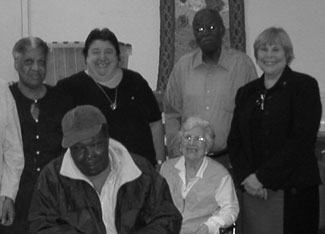 Assemblywoman Millman with Marianne Nicolosi (Director) and seniors at the Park Slope Geriatric Day Center.
Assemblywoman Millman with Marianne Nicolosi (Director) and seniors at the Park Slope Geriatric Day Center.
|
Senior Bill of Rights: This bill would set down in law that New York State services
and programs for seniors should be shaped by the principles of strengthening independence, affirming dignity, and
maximizing choice. It would recognize that seniors provide a vast potential source of social, cultural, historical, and
spiritual enrichment and leadership. It would put into place a series of quality-of-life goals and advisories that would
guide the design of programs for seniors, and place the responsibility on the State Office for the Aging to provide
regular updates on the success of the programs in meeting these goals. (A.9587-C)
Nursing Home Ombudsman Assistance: This bill would require nursing homes
to display posters provided free of charge by the Ombudsman Program in several public areas. This bill would help
ensure that all residents know that they have someone to call if they need help in resolving any dispute.
(A.2350 )
|
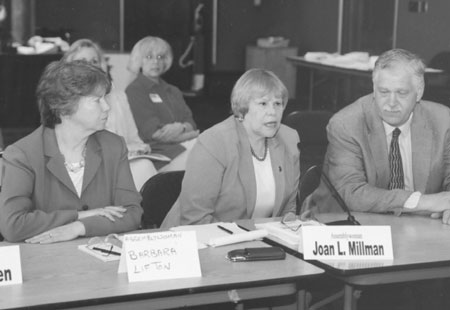 Assemblymembers Lifton, Millman, and Englebright hear testimony at the aging roundtable in Albany.
Assemblymembers Lifton, Millman, and Englebright hear testimony at the aging roundtable in Albany.
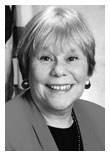

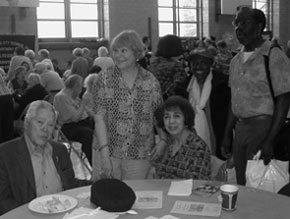 Assemblywoman Millman at her annual Senior Fair. Seniors receive free services and
meet service providers.
Assemblywoman Millman at her annual Senior Fair. Seniors receive free services and
meet service providers.

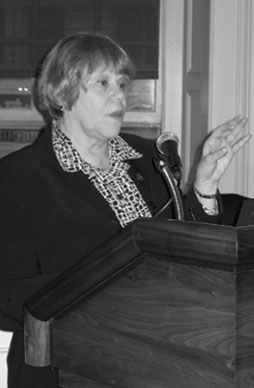 Assemblywoman Millman addresses the aging roundtable in Brooklyn.
Assemblywoman Millman addresses the aging roundtable in Brooklyn.
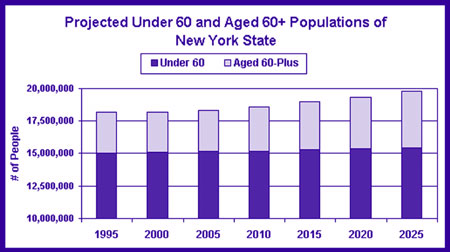
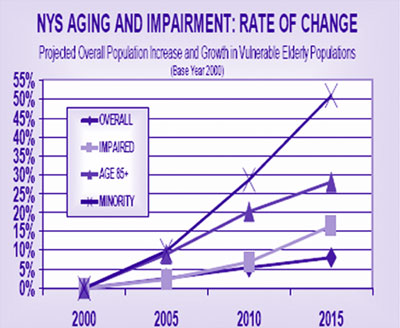
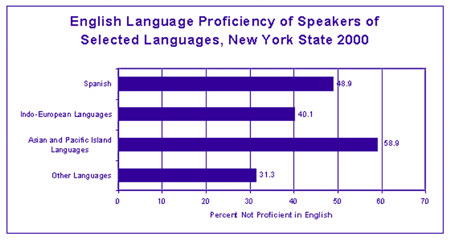
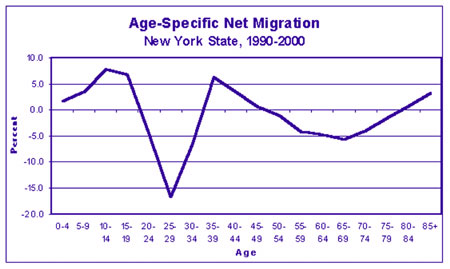
 Assemblywoman Millman with Marianne Nicolosi (Director) and seniors at the Park Slope Geriatric Day Center.
Assemblywoman Millman with Marianne Nicolosi (Director) and seniors at the Park Slope Geriatric Day Center.